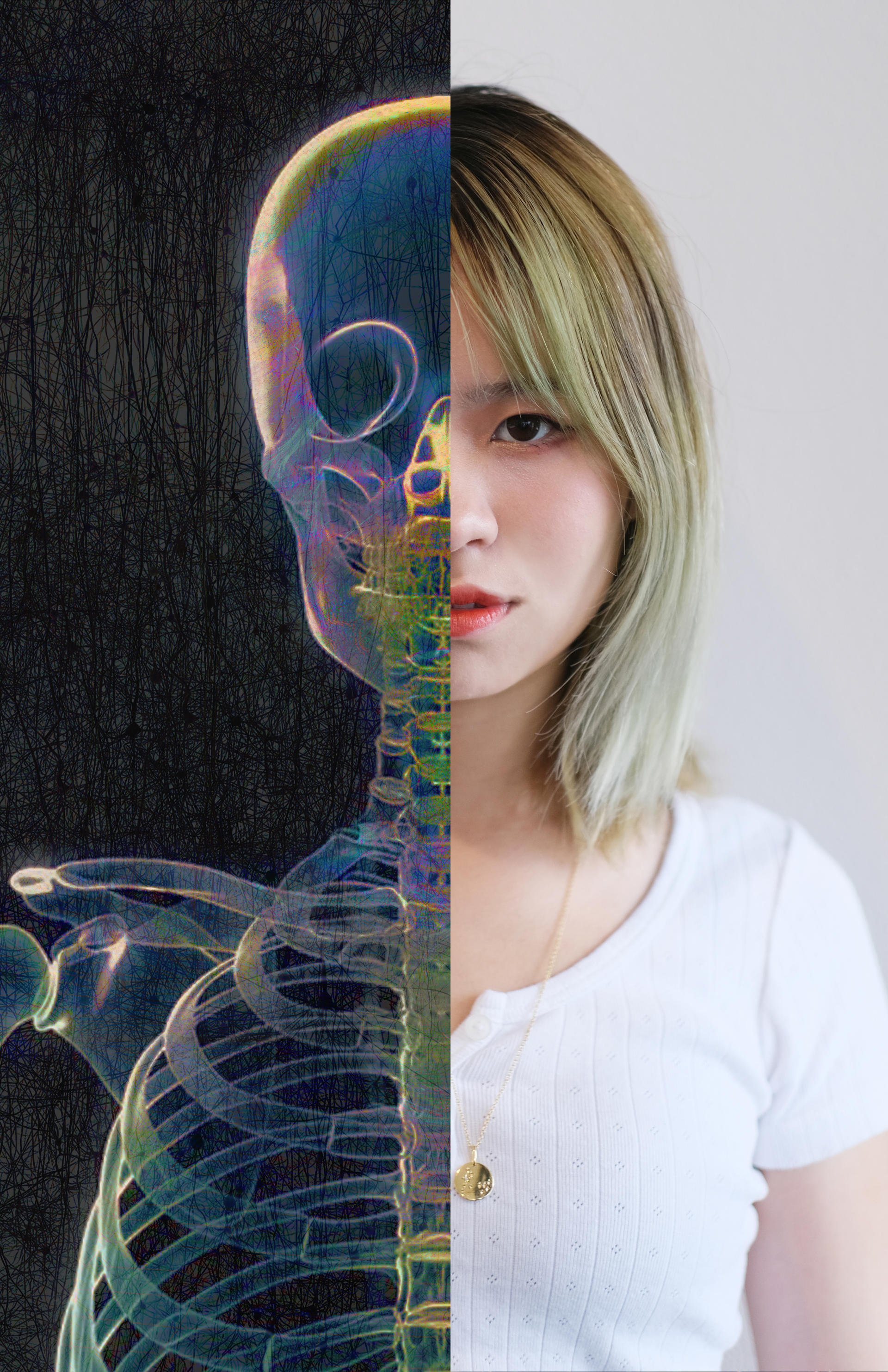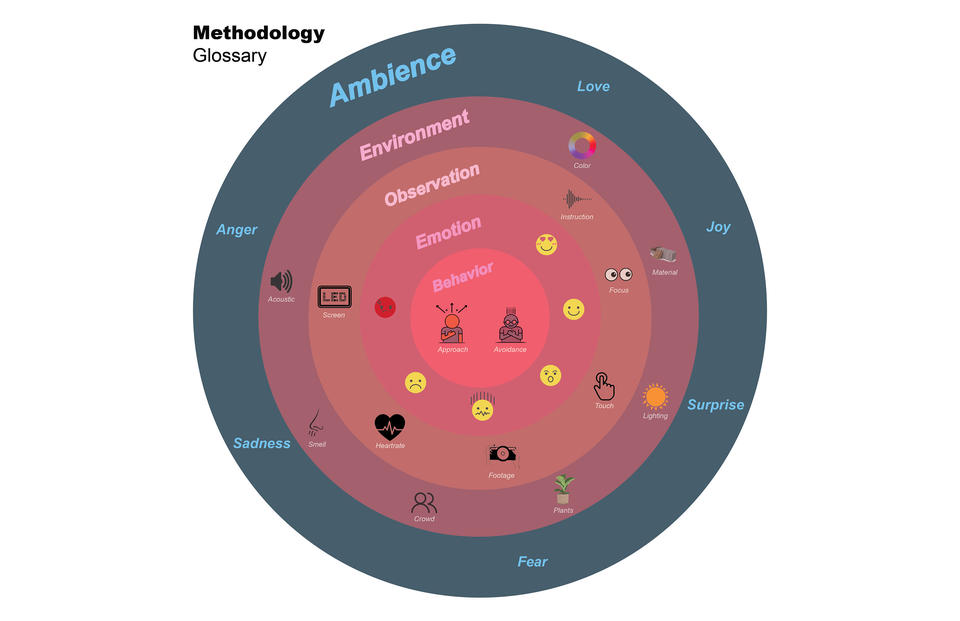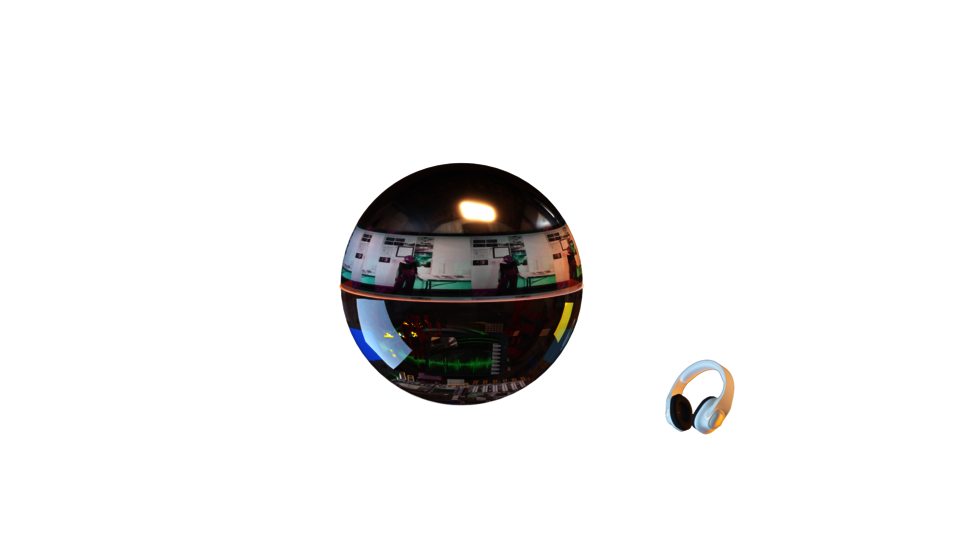Xueyun Zou
Space of Ambience_learning the relationship between environment, emotion, and behavior
I feel like I live life as two different people: one at school, and another at home, and I’m constantly trying to figure out why I feel this way. One of my undergraduate instructors said that he feels I am hiding myself in school, which I hadn’t thought about until he said this to me. I am more social in life, but act introverted in school. I don't want to be attentioned in some context but I want to understand the meaning behind it. This project is a design process for mirroring people in spaces. Mirrors are bridges to connect my inner world and the outer world. When I stare in a mirror, I feel strange. It seems to bring together different parts of me, my fear, my bravery. Reflecting myself there opens up a space for me to focus and explore the space between my feelings and surroundings.
I often act in a very controlled way in my everyday life, so when I show up in different spaces, people only see what I want them to see. Mirrors help me realize that my emotional side is not always visible in how I show myself to others. For example, I would dress up when I am in a fine dining restaurant, but that doesn’t mean I do not want to wear comfortable clothes. But of course, mirrors are not all the same, so my experience with them also shifts. Plane mirrors reflect only a portion of their surroundings and are bound by their own edges. In contrast, curved mirrors have the power to reflect my entire surroundings instead of just a segment of them. Curved mirrors create a moment, a space, for me to stare at the relationship between my human emotion, my behavior, and the environment I relate with. The experience of reflecting in the curved mirror is exciting. My body and surroundings squeezed, merging me in the surroundings and magnifying how I sense space. Those mirrors frame all the components in the environment, and I can see their relationship with my behaviors and feelings in space.
With that in mind, I decided to experiment. I took a mirrored ball, went to different spaces, took photos, and recorded observations of how I felt and the components of those environments that generated strong emotion. I walked through cafe shops, streets, conference rooms, etc, and stayed for a while to experience myself in space. I found several things. For instance, I noticed that my body's movements changed based on my emotions, and my emotions changed regarding my environment. So then, space impacts the way I use and express my body. Due to their exclusivity, curved mirrors became a research tool. They are objects I use as a medium to really see myself in space.
By mapping my experiences in space, I understood that the way I experience architecture goes beyond the physical. Analyzing the relationship between my emotions, behaviors, and surroundings let me understand that we are all components of the environment and that together we create ambiances. My project proposes creating architectures that go beyond the object and can be designed as ambiances that embrace the relationship between emotions, behaviors, and environments. I decided to use the collection of my experiences as data to build a system that works as design tools for me and others. Usually, designers make spaces based on their single narrative experience of understanding. However, in this project, I want to use people's emotional awareness to turn it into a method to design spaces that prioritize users and not designers.
This design process then aims to embrace people's emotions, and behaviors in space by exploring their representations of the environment they inhabit, which are emotionally tinged based on their internal feelings that show up in spatial explorations and behaviors.
Through engaging with individuals and the sphere ball in interviews, I want to collect people's experiences and seek the components of the surrounding environments that affect their emotions and behaviors. I want to appreciate the relationships between people and space and transform the mapping system as a tool into the main source to design a space, focusing on the human emotional experience. I propose creating a space using the collective data of interviewers, which lets users feel approached or avoided based on the attraction and distraction of feeling. Space responds to the user's emotions by reflecting his/her own preference.
This design process aims to create a space beyond helping architects understand how to design concerned about human emotions, behavior, and the environment. It can also support people to become aware of the ambiances they create and are part of by releasing their emotions, completing a self-learning process to learn what environment setting they prefer and how to connect and express their emotions in space.
Image

Two side of Me
photography, ps
2022
Image
Environmental Attitude_ Space feel cozy
photography
2021
Image
Environmental Attitude_ Space feel anxious
Photography
2021
Image
Space feel cozy_ plan diagram
Image
Space feel anxious_ plan diagram
- Architecture
- Ceramics
- Design Engineering
- Digital + Media
- Furniture Design
- Global Arts and Cultures
- Glass
- Graphic Design
- Industrial Design
- Interior Architecture
- Jewelry + Metalsmithing
- Landscape Architecture
- Nature-Culture-Sustainability Studies
- Painting
- Photography
- Printmaking
- Sculpture
- TLAD
- Textiles


